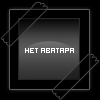|
Digital Universe Atlas Hayden Planetarium
|
|
| Montesuma | Дата: Четверг, 08.03.2012, 20:38 | Сообщение # 1 |

Первооткрыватель
Группа: Пользователи
 Российская Федерация
Российская Федерация
Сообщений: 539
Награды: 3
Статус: Offline
| Hayden Planetarium бесплатно разрабатывает Digital Universe Atlas... Это атлас вселенной включающий крупномасштабную её структуру... Которую кстати увидеть проще чем землю...
Вот описание и скриншоты из английской Википедии:
Original author(s) Brian Abbott, Carter Emmart, Steven Marx, Ryan Wyatt
Developer(s) American Museum of Natural History's Hayden Planetarium, National Aeronautics and Space Administration
Initial release 2002
Operating system Windows, Mac OS X, Linux, AmigaOS 4, IRIX
Platform PC
Type Educational software
License Illinois Open Source License
Website www.haydenplanetarium.org/universe
Digital Universe Atlas or Digital Universe is a free open source software planetarium application, available under the terms of the Illinois Open Source License, and running on Linux, Windows, Mac OS X (10.5 and above), AmigaOS 4, and IRIX.
It is a standalone 4-dimensional space visualization application built on the programmable Partiview data visualization engine designed by Stuart Levy of the National Center for Supercomputing Applications (NCSA) as an adjunct of the NCSA's Virtual Director virtual choreography project. The Virtual Universe Atlas project was launched by the American Museum of Natural History's Hayden Planetarium with significant programming support from the National Aeronautics and Space Administration as well as Stuart Levy. The database draws on the National Virtual Observatory.
A far more powerful visualization engine than any other existing freeware application, it is nevertheless still far less widely known among amateur astronomers.
Along with Celestia and Orbiter, and unlike most other planetarium applications, Digital Universe shares the capacity to visualize space from points outside Earth. Building on work by Japan's RIKEN, its planet renderings and zoom visualizations can match or exceed Celestia and Orbiter. Unlike Celestia and Orbiter, highly accurate visualization from distances beyond the Milky Way galaxy is integral to the software and the datasets. This allows for unrivaled flexibility in plotting itineraries that reveal true distances and configurations of objects in the observable sky. It therefore improves understanding of the surroundings of the solar system in terms of observer-neutral celestial coordinate systems -- systems that are neither geocentric nor heliocentric -- such as the galactic coordinate system and supergalactic coordinate system. Here is how the project's developers characterize the purpose of the Digital Universe Atlas:
[U]nlike a globe of the Earth, a celestial globe has little practical use today. No one believes anymore, as scholars did in the Middle Ages, that the stars are lights on a uniformly distant sphere. Tracing a path from star to star on such a surface, as if it were the outline of a constellation, reveals next to nothing about the shifting perspective that a true stellar voyager might experience, or what our Sun might look like from another star. No flat map, no globe painted with stars, can accurately render the true three-dimensional spatial relations among the objects scattered across the sky.[1]
The Digital Universe Atlas has spun off a commercial-grade planetarium platform from SCISS called UniView that was featured in the White House star party on October 7, 2009.[2] The Atlas database and Partiview interface is compatible with professional planetarium software such as Evans & Sutherland's Digistar and Sky-Skan's DigitalSky 2.

Digital Universe Atlas Partiview Console

Digital Universe Atlas Partiview Console 2

DUA in Use in a Planetarium Setting
ЗЫ: По русски о нём нигде ненашёл...
ЗЫЫ: Галактики видел, а землю ненашёл...Добавлено (08.03.2012, 20:38)
---------------------------------------------
Кстати весит всего 450 мб...
Если череп смеется - значит у него есть на то причины.
Слова Ванталы
|
|
|
| |
| Duke | Дата: Четверг, 08.03.2012, 21:21 | Сообщение # 2 |

Первооткрыватель
Группа: Команда SE
 Антарктика
Антарктика
Сообщений: 419
Награды: 2
Статус: Offline
| По этой программе уже когда-то был разговор здесь http://spaceengine.org/forum/6-124-5209-16-1327777537
К сожелению материалы из нее использовать проблематично в силу ограничений налагаемых их лицензией.
|
|
|
| |
|
| Duke | Дата: Четверг, 08.03.2012, 23:34 | Сообщение # 4 |

Первооткрыватель
Группа: Команда SE
 Антарктика
Антарктика
Сообщений: 419
Награды: 2
Статус: Offline
| Quote (SpaceEngineer) Каких ещё лицензий? SDSS каталог можно использовать где и как угодно. Это не коммерческий продукт, а научное исследование!
Тогда говорили не столько о каталогах в общем, а о конкретных каталогах и текстурах из этой программы, так как они там немного переработанны. В этой программе кажись каталог шестого обзора.
|
|
|
| |
| Montesuma | Дата: Пятница, 09.03.2012, 14:35 | Сообщение # 5 |

Первооткрыватель
Группа: Пользователи
 Российская Федерация
Российская Федерация
Сообщений: 539
Награды: 3
Статус: Offline
| Да... Вот только в этой программе уж больно сложное управление основанное на переключении скоростей перемещения по вселенной... Состоит из двух или даже трех под программ... Атлас Млечного пути, атлас галактик и ещё какойто...
По ней даже ютубе видео нет кроме того что на сайте разрабов, но оно какбудто не из этой программы, а из SE...
В солнечную систему входил появлялись орбиты планет, но вот подойти близко к одной из них никак неполучается...
Если череп смеется - значит у него есть на то причины.
Слова Ванталы
|
|
|
| |